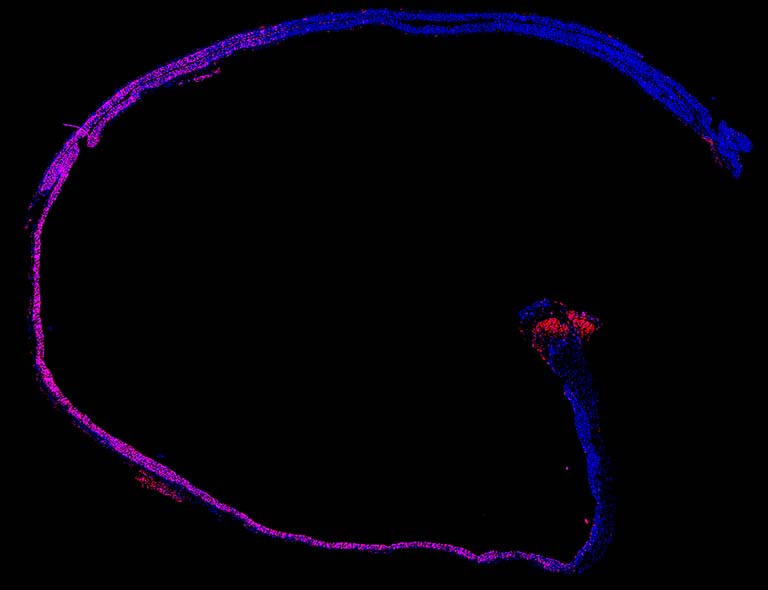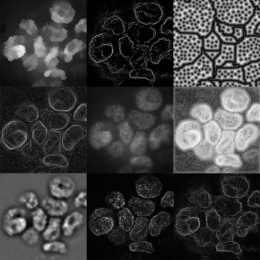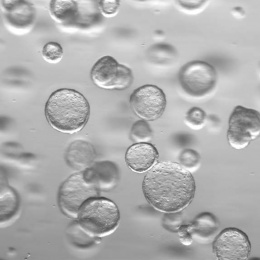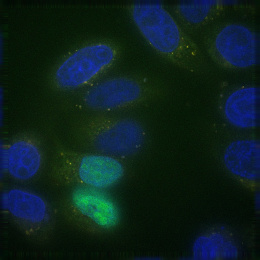More to the Point: Precision Oncology Meets Discovery Science
More to the Point: Precision Oncology Meets Discovery Science
Collections: Image Award Winners, Precision Cancer Medicine
Daniel Schmidt, Iva Gramatikov, Matthew Vander Heiden
Koch Institute at MIT, MIT Department of Biology
This image of the distal colon shows how a highly focused radiation beam can be precisely targeted to induce DNA damage to nuclei in a region of interest (pink) without affecting the neighboring cells (blue). The Vander Heiden Lab is studying the effects of spatially targeted radiotherapy on metabolism as well as immune and stromal (support) cells in the tumor microenvironment.
Understanding the molecular impacts of this approach will help physicians identify key pathways and therapeutic combinations to improve efficacy of radiotherapy in the clinic. For patients, the clear distinction between damaged and undamaged tissue offers hope for more strategic treatments with fewer side effects.

Video
Daniel Schmidt presents on his image.





